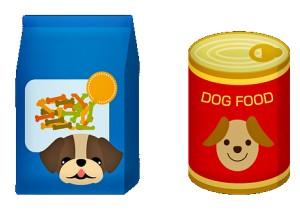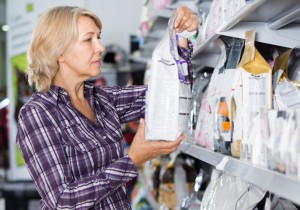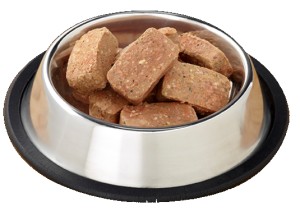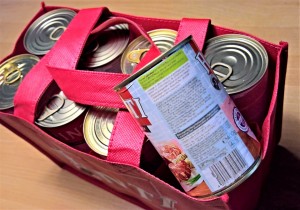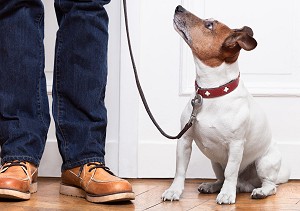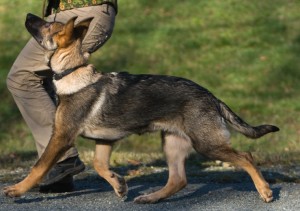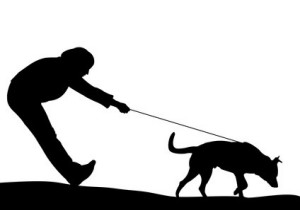3 Best Ways To Feed Your Dog Healthy Food
By Michele Welton, Dog Trainer, Breed Selection Consultant, Author of 15 Dog Books
→ 3 Best Ways To Feed Your Dog Healthy Food
What Every Puppy Owner Should Know About Feeding
A Quick Way to Make Homemade Dog Food
Pros and Cons of Raw vs Cooked
What Makes a Dog Food Good – or Awful
Truth and Lies on Dog Food Packages
5 Best Kibble and Canned Dog Foods
5 Reasons Not To Feed Your Dog Grains
Two Shocking Reasons Vets Recommend Kibble and Canned Dog Food
How To Tell If Your Dog Is Overweight – And What To Do About It
These 3 options are all good options. In fact, I like to rotate and combine them. Variety is good!
-
 Homemade (cooked) or homemade (raw). You combine meat, veggies, bone (or bone meal), and a couple other supplements. If this is what you want to feed, your next decision is raw vs cooked and then on to my homemade recipe.
Homemade (cooked) or homemade (raw). You combine meat, veggies, bone (or bone meal), and a couple other supplements. If this is what you want to feed, your next decision is raw vs cooked and then on to my homemade recipe. -
Commercial RAW. If you want your dog to eat raw, but don't want to prepare the food yourself, you can buy a pre-made raw diet. You can also (very lightly) cook these diets.
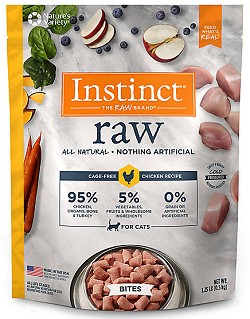 Commercial raw diets come frozen or freeze-dried. You can order them online, or at your pet store you'll find frozen raw food in the freezer section; just defrost and serve. You'll find bags of freeze-dried raw food on a shelf; just add water and serve. I prefer the frozen, but both are good.
Commercial raw diets come frozen or freeze-dried. You can order them online, or at your pet store you'll find frozen raw food in the freezer section; just defrost and serve. You'll find bags of freeze-dried raw food on a shelf; just add water and serve. I prefer the frozen, but both are good.See my recommended brands of commercial RAW dog food.
Raw diets are obviously meant to be fed raw. If you're concerned about the safety of feeding raw, this might reassure you....
Most frozen or freeze-dried raw foods have been subjected to a safety process to eliminate bacteria.
The process is called High Pressure Pasteurization. HPP applies extremely high water pressure that kills bad little buggers like e.coli, salmonella, and listeria.
One company describes it as "putting the squeeze" on pathogens – without destroying vital nutrients as would occur with heating.
If you're still doubtful, you might start out by cooking the food very lightly. After awhile, you might decide to cook it less, and finally to just serve it raw.
Dry kibble or canned food?
You might be wondering why kibble or canned foods didn't make my list of the best ways to feed your dog healthy food.
Most of us start out feeding kibble or canned. I certainly did. Forty years ago, I fed kibble to my German Shepherds.
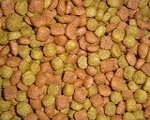 I couldn't put my finger on why it made me so uneasy to do so, but it did. It just didn't seem to make sense that the food they depended on for their health and vitality consisted of heavily processed brown pebbles that clattered and clunked into their food bowls.
I couldn't put my finger on why it made me so uneasy to do so, but it did. It just didn't seem to make sense that the food they depended on for their health and vitality consisted of heavily processed brown pebbles that clattered and clunked into their food bowls.
It felt like I was feeding a hamster.
I tried adding water and canned food to make it look better. But when I read the ingredients on the can, there was lots of weird stuff I had never seen on a grocery shelf anywhere: beet pulp? corn gluten? That's what dogs should eat??
Made no sense.
My dogs produced a lot of waste. That wasn't much fun to clean up.
I even wondered if their food might be a contributing factor to their itchy allergies, flaky skin, gunky ears, and softish stools. So I dug into the research... and discovered that there were much better ways to feed my dogs.
Most importantly, I discovered, to my dismay:
.... that all dry and canned dog foods are heavily cooked/processed, which damages natural nutrients such as vitamins and enzymes. The manufacturer tries to fix that by spraying on synthetic nutrients, but those are harder for a dog to absorb.
.... that most dry and canned foods include poor-quality meat and dog-inappropriate ingredients such as corn, soybeans, chickpeas, or potatoes.
.... that far from being "good for a dog's teeth", bits of kibble become wedged between the teeth and under the gumline. These lodged bits become landing spots for bacteria, leading to tooth decay and gum disease.
... that dry and canned foods are terribly deficient in Omega 3 fatty acids, putting dogs at high risk for developing allergies and other chronic diseases.
.... that because of messy mass production processes, dry and canned diets are prone to contamination, resulting in numerous dog food recalls and the deaths of many beloved dogs.
Read more about dry kibble and canned dog food and you'll see why I was so appalled. That was the end of my dogs eating dry or canned food every day.
Now, I do feed kibble and canned dog food once in a while.
For example, when I travel with my dogs and need to stay in a motel.
If you absolutely must feed kibble or canned every day, at least get one of my recommended brands and combine it with one of these frozen or freeze-dried foods.
Or mix in some homemadel food: ground beef or chicken breast (raw or cooked), salmon (cooked), an egg (raw or soft-boiled), vegetables (steamed, or pulverized raw in a food processor), cottage cheese, plain yogurt, and/or bone broth. Read my homemade food article for more ideas.
Feeding real, fresh, whole food can make a huge difference in your dog's future health. That's why a multitude of veterinarians are in full support. World-renowned veterinarian Dr. Martin Goldstein DVM says....
 "You can boost your pet's health profoundly by making one simple decision. All you have to do is change his diet from commercial-brand fare to something you may never have imagined giving him – real food."
"You can boost your pet's health profoundly by making one simple decision. All you have to do is change his diet from commercial-brand fare to something you may never have imagined giving him – real food."
MORE ABOUT FEEDING
HONEST ADVICE ABOUT TRAINING
My best-selling books – now available FREE on my website
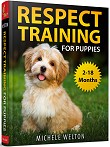 Respect Training For Puppies: 30 seconds to a calm, polite, well-behaved puppy is for puppies 2 to 18 months old. Your puppy will learn the 21 skills that all family dogs need to know. Click here to read for free.
Respect Training For Puppies: 30 seconds to a calm, polite, well-behaved puppy is for puppies 2 to 18 months old. Your puppy will learn the 21 skills that all family dogs need to know. Click here to read for free.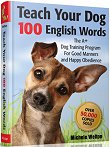 Teach Your Dog 100 English Words is a unique Vocabulary and Respect Training Program that will teach your adult dog to listen to you and do what you say. Click here to read for free.
Teach Your Dog 100 English Words is a unique Vocabulary and Respect Training Program that will teach your adult dog to listen to you and do what you say. Click here to read for free.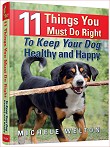 11 Things You Must Do Right To Keep Your Dog Healthy and Happy helps your dog live a longer, healthier life. Get my honest advice about all 11 Things before you bring home your new puppy, because some mistakes with early health care cannot be undone. Click here to read for free.
11 Things You Must Do Right To Keep Your Dog Healthy and Happy helps your dog live a longer, healthier life. Get my honest advice about all 11 Things before you bring home your new puppy, because some mistakes with early health care cannot be undone. Click here to read for free.

